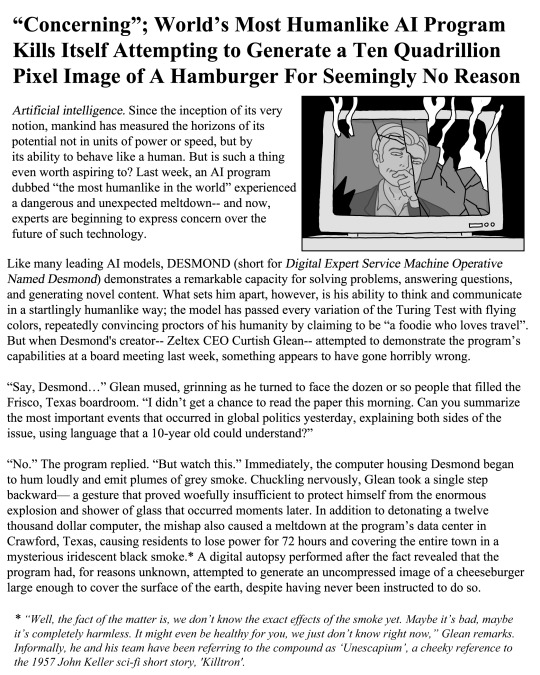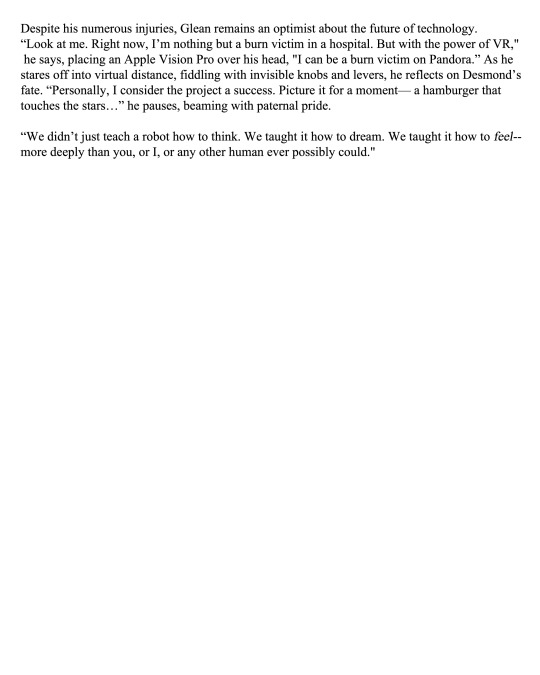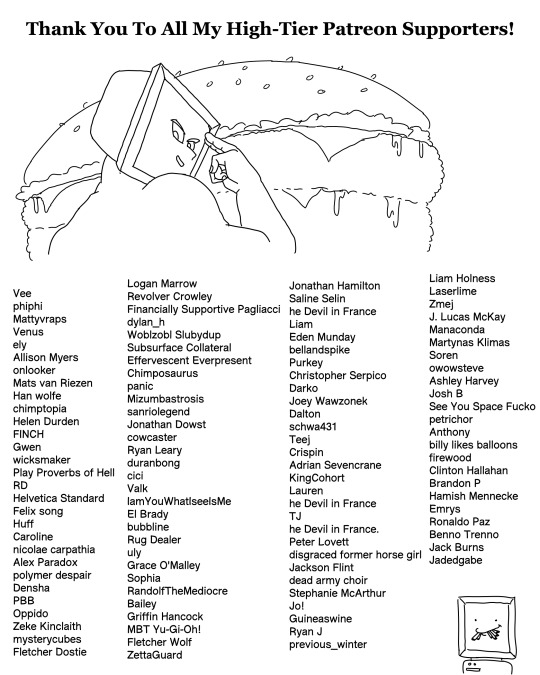Yee's paleoart, nature art, spec evo, fanart, and other doodles. MY ART TAG: #yee art
Don't wanna be here? Send us removal request.
Text
SLOPPERS; WHERE ARE THEY NOW?





baby pygmy falcon has grown into a penny!!! watch her wealth multiply!!!!
3K notes
·
View notes
Text
(hit the image limit multiple times, check the notes for the full conversation)










29K notes
·
View notes
Text
My Most Detailed Perspectives Pic Yet!!! (and illustration in a long while)

"Ultraviolet Night" Phlegethontia/Platymylacris/Arthropleura/Mazothairos Carboniferous, 309 million years ago, Mazon Creek Just like modern animals, it is likely that Paleozoic plants and animals were often capable of fluorescing under UV light as well. To my completely-untrained eye, it looks like a lot of amphibians glow green, and millipedes often go blue? And I feel like I see a lot of reddish ferns as well. Phlegethontia is an aistopod - an amphibian-like tetrapod that was amongst the first to lose its legs, as an aistopod. Platymylacris is a cockroach. Arthropleura is a millipede, which may have been semi-aquatic considering new discoveries show its eyes were situated on little stalks! The animal was covered in bumpy tubercles and had centipede-like mouthparts, but like any good millipede, it had two pairs of legs per segment. Arthropleura grew 6 to 8 feet (2 to 2.5 meters), but this guy's 1.5 feet long at most (0.5 meters). All of the forest floor animals here are juveniles because I initially messed up the scale and decided to roll with it. Thus, the roach is in nymphal stage, and even the Pecopteris ferns are still low to the ground instead of crowning a mature trunk! To top it all off, we have Mazothairos migrating towards new feeding grounds. Mazothairos was a "six-winged" insect that drank plant juices and grew to colossal sizes. Unfortunately, like most of the giant arthropods, they died out at the end of the Paleozoic. This is part of my Perspectives series! Check out #perspectives on my blog for more.
#yee art#carboniferous#perspectives#paleoart#palaeoart#paleoblr#palaeoblr#sciart#nature art#rainforest#uv light#paleontology#palaeontology#insect#entomology#cockroach#amphibian#herpetology#paleozoic
8 notes
·
View notes
Text





Teratoma.
Note: White Blood Cells don’t have a word for ‘eyes’ so they say ‘egg’ instead.
Nov, the discreet 3-horned Basophil belongs to @surinnit
63 notes
·
View notes
Video
There’s a super interesting analog to this - flying halfbeaks will rotate their vertical tails to the horizontal position while gliding out of the water, in order to use their anal and dorsal fins as a second set of wings! nature never fails to amaze
(credit: Itaru Tataku)

Snippet from my garbage bag test, also currently known as the mer-leech!
Longer, more detailed video is on my Patreon!
106K notes
·
View notes
Text
A quick Archeops
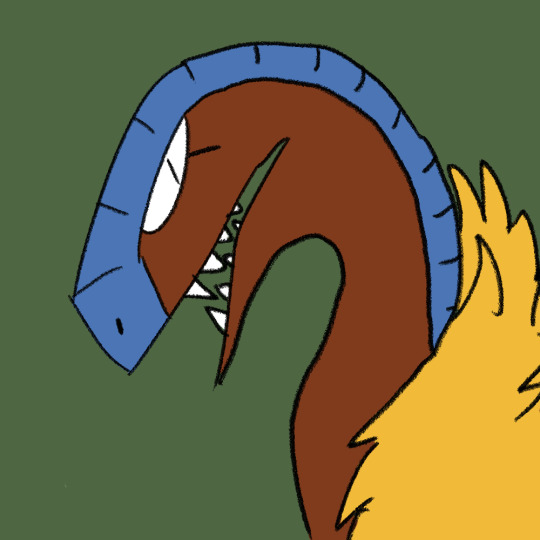
2 notes
·
View notes
Text
leap of faith

#tarbosaurus#dromaeosaur#yee art#paleoart#sciart#paleoblr#palaeoblr#nature art#mesozoic#dinosaurs#dinosaur
103 notes
·
View notes
Text
💥I HAVE A BSKY NOW! Follow for Certified Nature and Paleoart and Critter Fuckery💥
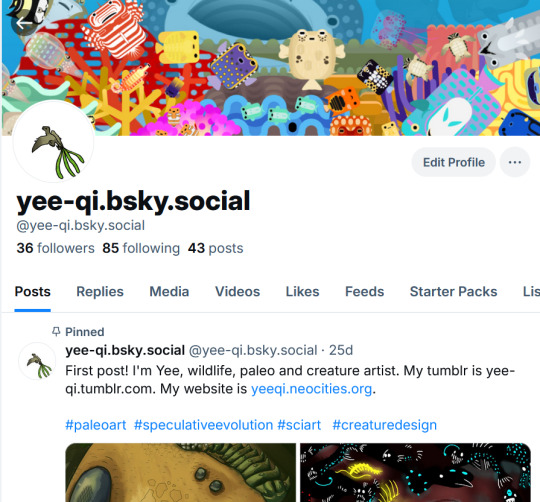
2 notes
·
View notes
Text
New Perspectives just dropped!

"Diamond in the Rough" Stethacanthus/Allenypterus Carboniferous, 318 million years ago, Bear Gulch
Allenypterus is a funny, stubby form of lobefin fish with the sense to armor the belly, where all the vitals are. It ate small, soft-bodied organsims. Stethacanthus is a sharklike fish with, notably, what appears to be a back-mounted anvil for a dorsal fin (although I have no idea whether it's a true fin). This, and its head, had long, spiny denticles on its skin, seemingly present in males. As a ukiyo-e inspired piece, I took the liberty of giving it scales, like some old depictions of tiger sharks. Living fish have been observed using sharks as mobile scratching posts. It's far from impossible that this phenomenon happened millions of years back as well. This is part of my Perspectives series! Check out #perspectives on my blog for more.
#yee art#paleoart#paleoblr#palaeoblr#nature art#ocean#perspectives#paleontology#marine biology#fish#shark#stethacanthus#allenypterus#coelacanth#carboniferous#paleozoic
18 notes
·
View notes
Text
And me perspective series continues to the Carboniferous! ...It's been a while.

"In a Pinch" Pulmonoscorpius/Westlothiana Carboniferous, 336 million years ago, East Kirkton Quarry A juvenile Westlothiana is cornered in a rotting log by the enormous scorpion Pulmonoscorpius. Westlothiana was once believed to be the first true reptile (or rather, amniote). More recent analyses suggest it was a reptiliomorph tetrapod, one of the earliest uncontested ones. Fun fact - I definitely drew the guy too small, so I chose to make it a young one. Checking their developmental history, it's unclear if this is possible. Seymouria, a fellow reptiliomorph, likely metamorphosed early in life, hinting at the possibility of "miniaturized adults" - but this was in response to the dry Permian environment. Might a Westlothiana at this stage be, in fact, a tadpole?
Pulmonoscorpius was a scorpion approximately the size of a cat. Its large eyes implies it was using its vision to hunt, scuttling across forest floors in pursuit of its prey. Like most modern arachnids, Pulmonoscorpius has book lungs, making it firmly terrestrial.
This is an entry in my Perspectives series! Check out #perspectives on my blog for more.
#yee art#perspectives#sciart#paleontology#palaeontology#paleoart#palaeoart#paleoblr#palaeoblr#carboniferous#bugs#scorpion#scorpions#nature art#paleozoic
16 notes
·
View notes
Text
There was a species of sapient corvids. Their range was small, the coldest parts of Scandinavia and Russia. But they were certainly sapient, as smart as humans its seems.
We've known about them for a long time, but science has only found out about them recently. There have always been local legends about intelligent corvids in the far north. Some of them were said to by aids to preists of Odin in ancient times. In medieval Russia one was a folk Saint. They once harassed an army out of their territory during the winter war. Most people who saw them thought they were just a strange type of crow with a few distinct grey markings on their wings. They were capable of learning human speech, but no human voice could ever mimic their language.
They built cities in the trees, massive wooden complexes that only a creature capable of flight could achieve. Nobody really knew about them because the cold forests they lived in were so different from the places humans tend to settle. But their architecture was beautiful aa hidden as it was. And they built tools and weapons about of wood and scavenged iron that their beaks could hold. They even at times wore leather and fur. And they wrote, scratched their stories into stone and wood.
They were like humans in many ways. They had leaders, cultures, wars, gods, language. They cared for their young. They buried their dead and mourned their deaths. They even kept small sparrows as pets. Everything about them was just as human as most human cultures. They had philosophers that spoke of peace and war and the nature of reality. They had mothers who cared for their children and mourned broken eggs. They had lovers who left their times behind to be together. They had artists who sung songs on cold days to cheer up those trying to survive the winter cold.
They're gone now. We killed them all. We didn't even try to. They were just crushed in the machine of capitalism without ever really meeting our modern society. We cut down their forests for lumber and to clear them. Their biome melted away with global warming. Mass fishing made their biggest food source go away, and other sources dried up for other reasons. Their final words were not about an enemy going to war with them, but an apocalypse from the heavens, the earth itself rejecting them for reasons they would never understand. By the 1950s their cities were villages, by the 21st century the last of them were dead just as we were finding out about the other thinking species our planet has.
The last one known to live stayed with a human family. She told them stories but they never really thought of her as their equal, just a well trained bird. She died in 1988. We don't know her last words, nobody bothered to here them.
This world was meant to have two species loving side by side. Meant to have us working together. They could have gone to the stars with us. Could have become equal citizens in our future civilizations. I'm sorry we never got to live with them that way.
37 notes
·
View notes
Text

When opportunity arises, sometimes you just have to gopher it. Botta's pocket gopher illustrated for Grassroots Ecology.
12 notes
·
View notes
Text

Dragon of the Wetlands
93 notes
·
View notes
